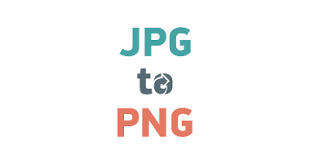Introduction:
In the digital realm, images are indispensable assets, enriching websites, presentations, and social media platforms. However, the choice of image format can significantly impact the quality and versatility of visual content.
In this article, we explore the transition from JPG file to PNG format, highlighting the features, differences, and utility of each, and the convenience of using an online converter to facilitate this transformation seamlessly.
What are the JPG?
JPG, or JPEG, stands for Joint Photographic Experts Group, the committee that developed the image compression standard. It is the most commonly used image format for photographs and digital graphics. JPG files utilize lossy compression, which reduces file size by discarding certain image data.
While this compression may result in some loss of image quality, it allows for significantly smaller file sizes, making JPG ideal for web use and sharing images via email or social media.
What is PNG?
PNG, or Portable Network Graphics, was designed as a replacement for GIF (Graphics Interchange Format) and provides a lossless compression format for images. Unlike JPG, PNG files support transparency and offer higher quality images with no loss of detail. This makes PNG particularly suitable for images with text, logos, or graphics with sharp edges, as it maintains the integrity of the image without sacrificing quality.
Difference between JPG and PNG:
- Compression: JPG uses lossy compression, which reduces file size by discarding some image data, while PNG uses lossless compression, preserving all image details without sacrificing quality.
- Transparency: PNG supports transparent backgrounds, allowing for greater flexibility in design, whereas JPG does not support transparency.
- Image Quality: JPG images may exhibit compression artifacts, particularly in areas with high contrast or fine details, while PNG images maintain high quality and clarity.
- Color Depth: PNG supports a broader range of colors and shades, making it suitable for images with complex color schemes, while JPG is more limited in color depth.
Uses of JPG and PNG:
- JPG: JPG is commonly used for photographs, web graphics, and images where file size is a concern, such as online publishing, social media, and email attachments. It is also suitable for printing purposes when high-quality images are not essential.
- PNG: PNG is preferred for images requiring transparency, such as logos, icons, and graphics with sharp edges. It is also used for digital art, illustrations, and images with text overlays where preserving image quality and transparency are paramount.
Conclusion:
In conclusion, the transition from JPG to PNG format offers users greater flexibility, image quality, and versatility in digital content creation.
While JPG excels in minimizing file size and is ideal for web use and sharing, PNG provides superior quality, transparency, and support for complex graphics.
With the convenience of online converters, users can effortlessly convert images from JPG to PNG and vice versa, ensuring their visual content meets the highest standards of quality and presentation in the digital landscape.
Read more article:- Yandexgames











